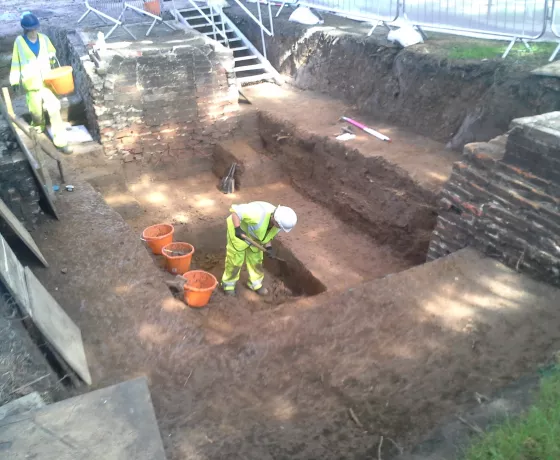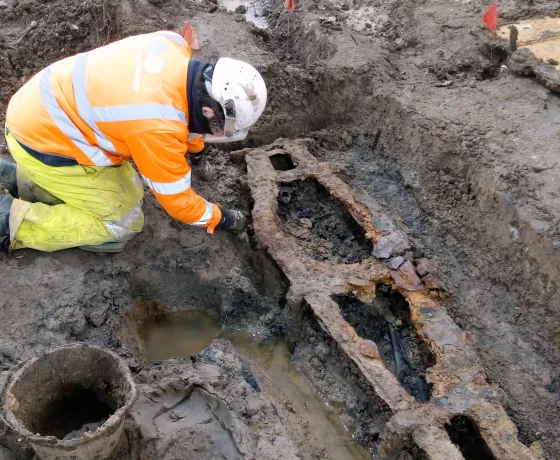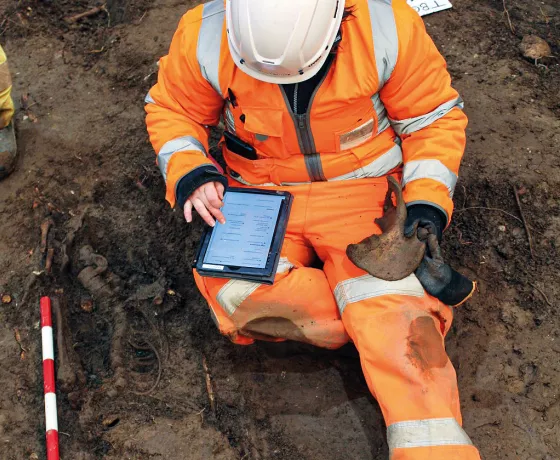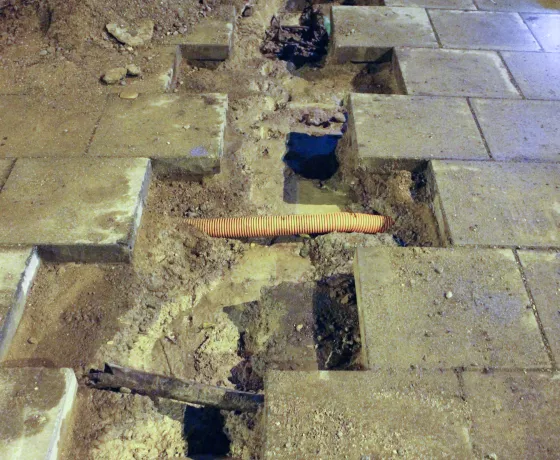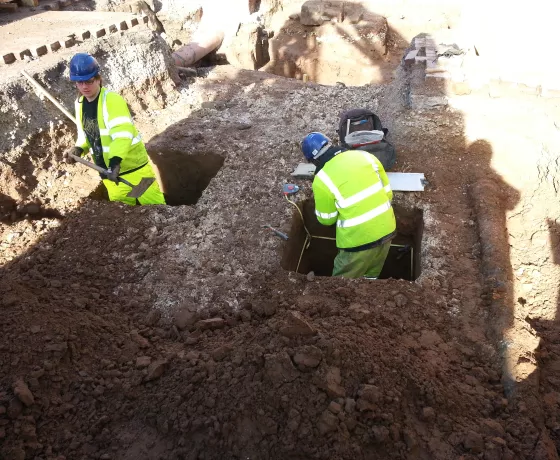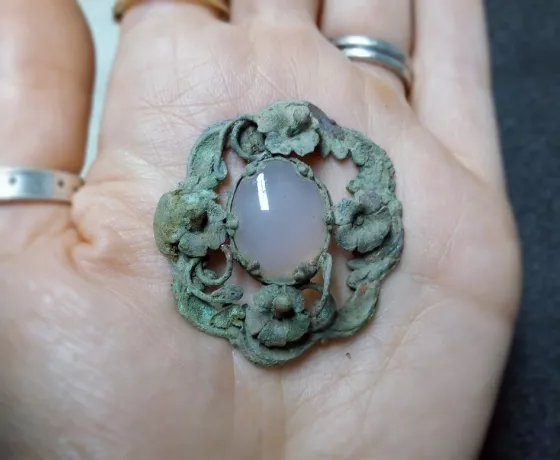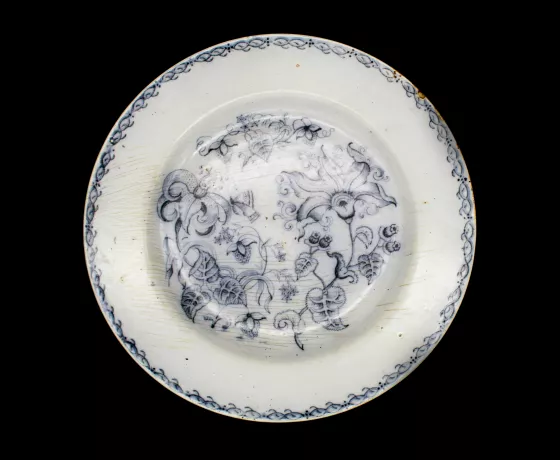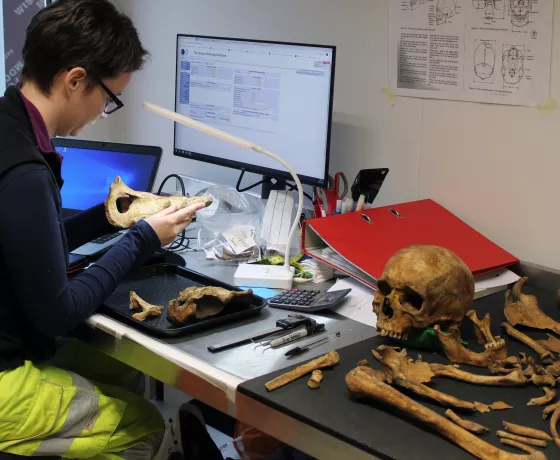The A63 Castle Street Improvement, Kingston upon Hull
National Highway’s A63 Castle Street Improvement is a £355m infrastructure scheme to enhance the busy main arterial route through the historic East Yorkshire port city of Kingston upon Hull.
Significant archaeological remains across the 2km-long project include the medieval Old Town, the Civil War siegeworks, and the listed Georgian docks, plus Trinity Burial Ground and the town gaol, the last two both founded in 1785.
Oxford Archaeology, together with Humber Field Archaeology, has been working collaboratively and effectively with a range of stakeholders on the project since 2013. We’ve successfully incorporated innovative approaches and disciplines into our work, which has involved heritage management, geoarchaeology, and funerary archaeology, as well as education and outreach.
Our early involvement has been a major plank in the success of the project, allowing us to gain understanding, apply knowledge, and develop crucial relationships with a range of stakeholders, both within the construction team, and with those responsible for monitoring and approving the conditions of the development consent order.
In the field from the very beginning
In 2013-14 we undertook desk-based work to enhance an understanding of the heritage resource within the scheme footprint, and to produce a geoarchaeological deposit model that identified a complex sequence of soft alluvial deposits beneath the scheme. We also produced a method statement for archaeological excavation within Trinity Burial Ground. This ensured that works were undertaken sensitively with due regard to legal and ethical standards, and to meet the requirements of the church and curatorial bodies.
In 2015 we dug four trial trenches within the burial ground, helping to inform approaches for more detailed investigation which were designed in close association with Principal Contractor, Balfour Beatty. In 2016-17 several trenches were excavated across the line of the medieval town defences, whilst parts of the Georgian Humber Dock walls were subject to historic building investigation.
From 2020-21 work primarily focussed on Trinity Burial Ground. Hundreds of monuments were recorded and carefully moved to storage. A tent was built over the 3000m area to ensure that the excavation of the largest assemblage of funerary remains from northern England, comprising thousands of skeletons, coffins, and artefacts from earth graves and brick tombs, could be undertaken privately.
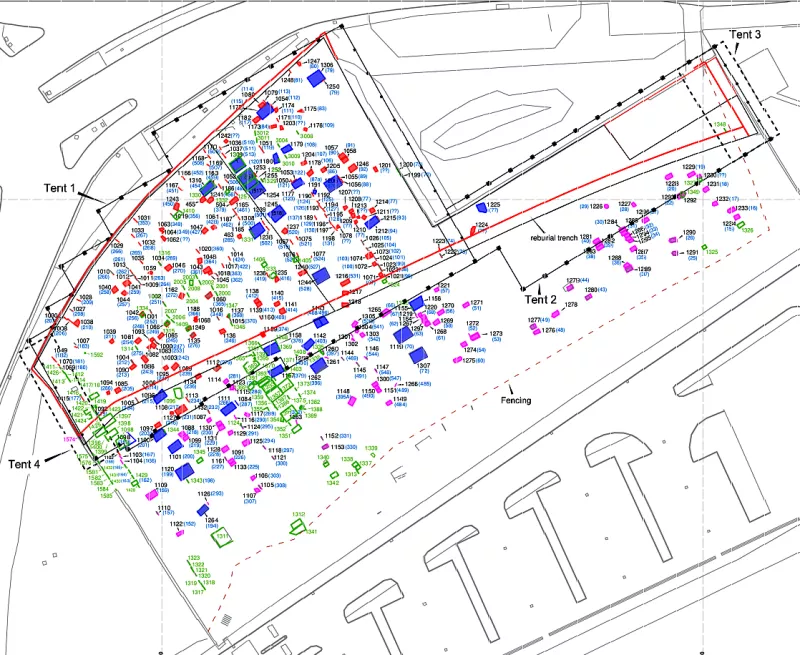
Working on human remains with the utmost respect
A bespoke compound was established, where the funerary remains could be washed, dried, x-rayed, stored, and recorded for analysis by our specialists, before being reburied on site to satisfy the Church. This complex process was aided by our self-designed digital system that efficiently integrated on-site recording and the tracking of funerary remains through processing, permitting them to be reunited to ensure that individual skeletons were reburied with their personal effects.
The main phase of fieldwork lasted nine months and involved a team of up to 90 people at any one time, undertaking a wide range of tasks. Working hand-in-glove with Balfour Beatty and enjoying their unstinting support, the works within the tent were carefully sequenced to ensure safe working conditions, maximise efficiency, and release areas for the wider construction schedule. By completion, the team had recovered, assessed, and reburied the remains of at least 8791 individuals, 1500 of whom were analysed in the on-site laboratory, with a proportion sampled for ancient DNA and isotopes. We also excavated the remains of the Georgian gaol, and various pre-cemetery features, including the first archaeological evidence for Hull’s little-known twelfth-century predecessor.

The works were completed on time and within budget amidst major adaptations to the global pandemic, with just two members of the archaeological team testing positive for Coronavirus. Covid notwithstanding, we were also able to complete several sustainability and outreach objectives, including taking on new starters and employees from the local community, engaging with local schools, history groups, and Hull Minster, and providing information to the project website (see below).
We are now analysing the findings from the project, as we seek to understand the lives and funerary customs of a cross-section of Hull’s community between 1785 and 1861.


